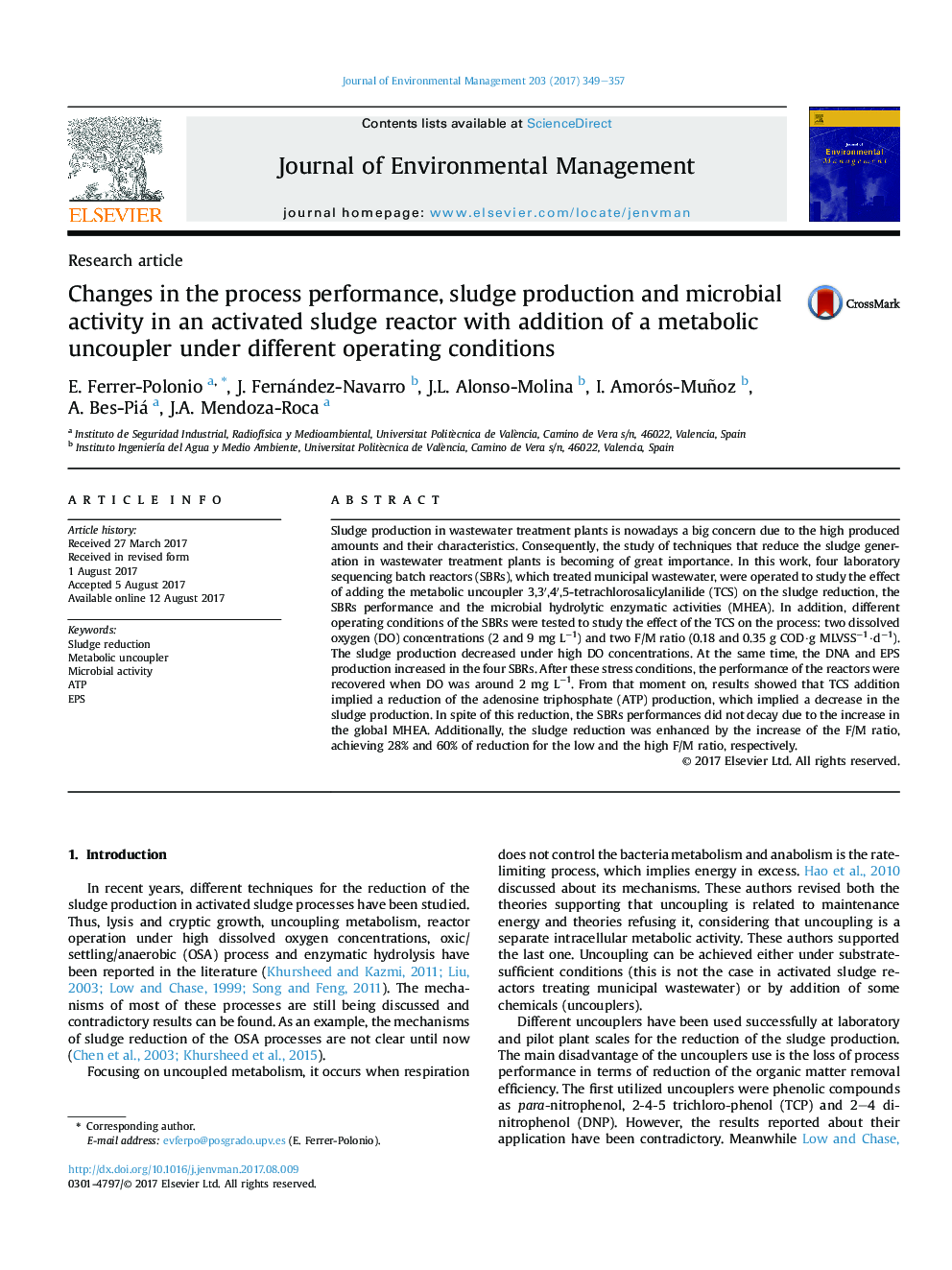| کد مقاله | کد نشریه | سال انتشار | مقاله انگلیسی | نسخه تمام متن |
|---|---|---|---|---|
| 5116520 | 1378099 | 2017 | 9 صفحه PDF | دانلود رایگان |
- Reduction of the sludge production with the metabolic uncoupler TCS has been checked.
- Hydrolytic enzymatic activities under high oxygen levels and/or TCS were analysed.
- Effect of TCS addition on ATP and extracellular polymeric substances was evaluated.
- At high F/M ratio a maximal sludge reduction of 60% was achieved.
Sludge production in wastewater treatment plants is nowadays a big concern due to the high produced amounts and their characteristics. Consequently, the study of techniques that reduce the sludge generation in wastewater treatment plants is becoming of great importance. In this work, four laboratory sequencing batch reactors (SBRs), which treated municipal wastewater, were operated to study the effect of adding the metabolic uncoupler 3,3â²,4â²,5-tetrachlorosalicylanilide (TCS) on the sludge reduction, the SBRs performance and the microbial hydrolytic enzymatic activities (MHEA). In addition, different operating conditions of the SBRs were tested to study the effect of the TCS on the process: two dissolved oxygen (DO) concentrations (2 and 9 mg Lâ1) and two F/M ratio (0.18 and 0.35 g COD·g MLVSSâ1·dâ1). The sludge production decreased under high DO concentrations. At the same time, the DNA and EPS production increased in the four SBRs. After these stress conditions, the performance of the reactors were recovered when DO was around 2 mg Lâ1. From that moment on, results showed that TCS addition implied a reduction of the adenosine triphosphate (ATP) production, which implied a decrease in the sludge production. In spite of this reduction, the SBRs performances did not decay due to the increase in the global MHEA. Additionally, the sludge reduction was enhanced by the increase of the F/M ratio, achieving 28% and 60% of reduction for the low and the high F/M ratio, respectively.
Journal: Journal of Environmental Management - Volume 203, Part 1, 1 December 2017, Pages 349-357
